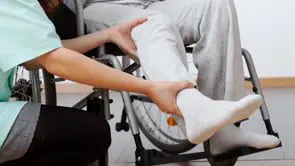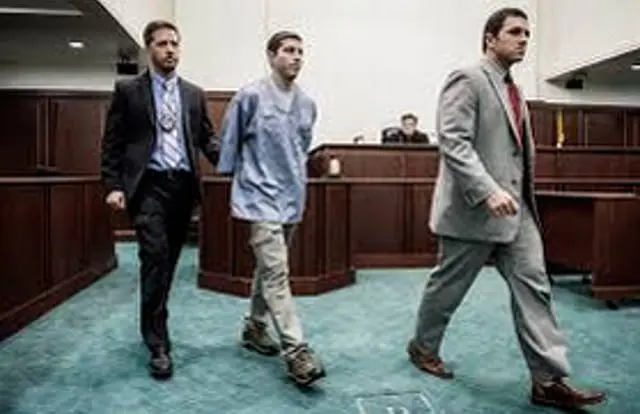PRO or CON
By Chris Finnie – former Contributing Author to Crime, Justice and America magazine. Originally published in 2002 and reposted with permission from Crime, Justice and America magazine
In 1996, California passed the “sexually violent predator” law, which allows the state to evaluate prisoners convicted of multiple violent sex offenses, and transfer them to state hospitals for up to two years of treatment — after they complete their prison terms — if they are deemed “likely” to repeat their offense.

-
Attorneys.Media
-
@attorneys_media
-
linkedin
-
Digg
-
Newsvine
-
StumbleUpon
In 1979, and again in 1985, Patrick Ghilotti was convicted of sex-related crimes, including four rapes. He admits to raping at least six other women.
In 1996, California passed the “sexually violent predator” law, which allows the state to evaluate prisoners convicted of multiple violent sex offenses, and transfer them to state hospitals for up to two years of treatment — after they complete their prison terms — if they are deemed “likely” to repeat their offense.
Since 1996, the California Department of Corrections has referred about 4,000 inmates to the California Department of Mental Health for such evaluations. 345 prisoners have been transferred to the Atascadero State Mental Hospital for a five-phase treatment program. 16 of the 345 have been released for a variety of reasons. Only one has completed all four inpatient treatment phases at Atascadero. Patrick Ghilotti.
So Ghilotti petitioned the court for release. The court granted his release with an appropriate follow-up treatment program. The State Department of Mental Health submitted a plan that requires him to wear a GPS tracking device at all times, take Luprin — a drug that lowers testosterone levels to prepubescent levels — refrain from Internet use for two years, and only see his wife of 15 years under court-approved supervision. But Ghilotti would not agree.
Marin County Superior Court Judge John Graham ruled that, since multiple medical evaluators had rated Ghilotti no longer mentally ill, the law indicated he should be set free — with or without a release plan. Then, Stephen Mayberg, head of California’s Department of Mental Health, persuaded the Marin County district attorney to file a recommitment petition. Ghilotti won that court case, but prosecutors appealed. The appeals court also refused to stay the release, and the case wound up in the California Supreme Court.
The Supreme Court ruled an offender can continue to be held if independent evaluators determine the person is likely to commit other violent sex crimes. But who gets to decide?


-
Attorneys.Media
-
@attorneys_media
-
linkedin
-
Digg
-
Newsvine
-
StumbleUpon
That question was sent back to Marin County Superior Court. The state high court also wants both sides to submit briefs on a number of issues including what “likely” means, and whether the courts have the right to review the evaluators’ reports.
Crime, Justice & America talked to Frank Cox, the Marin County public defender who represented Ghilotti, about why he should be set free. Nora Romero, a spokeswoman for the Department of Mental health spoke about why they want to keep Ghilotti in the hospital.
PRO
Patrick Cox doesn’t feel offenders should get off without punishment. He says, “The law is clear in California. If a person uses force in sexual conduct, they are responsible for it and must be punished.”
But he also feels the 1996 sexually violent predator law is “Catch 22 times 22.” This is because it says, “a person who has a mental predisposition toward sexual misconduct and has never been treated in prison, must now be incarcerated in a state hospital that looks, feels, and is in substance an extension of the prison system because he can’t help himself and has a mental disability.”
He believes Ghilotti should be released since “He did everything he was asked to do. He was a model prisoner, and completed 2 back-to-back commitments. He was evaluated by three doctors, who agreed he was no longer a danger, and he’s taking drugs. He’s willing to accept reasonable probation conditions.” But he terms the release program Ghilotti was offered “more onerous in some ways than being in prison.”
Cox is also worried about the practice of incarceration against the risk of further criminal behavior, calling it “preventive detention” and saying it “goes against our Western traditions of law. This could extend to people who threaten violence.”
He adds, “Pat Ghilotti’s mental problems are modest compared to most of the people I’ve seen in long-term incarceration. He is treatable and has been treated successfully.”


-
Attorneys.Media
-
@attorneys_media
-
linkedin
-
Digg
-
Newsvine
-
StumbleUpon
CON
Ms. Romero contends that Ghilotti has not finished treatment, since it consists of five phases and Mr. Ghilotti has only completed four. The fifth would have been community treatment, which was part of the release plan Ghilotti rejected.
Romero says the Department of Mental Health has always held the position that Ghilotti was not ready for release, quoting the head of the department Steven Mayberg, who said in court papers, “I am recommending extension of commitment because I believe that Mr. Ghilotti, as a result of his mental disorder, is likely to engage in sexually violent criminal behavior, and thus continues to meet the legal requirement for sexually violent predator civil commitment.”
In an interview with the Los Angeles Times, Mayberg is also quoted as saying, “We’re really clear that at this stage there is not a cure for sexually violent predators. I don’t know that I’m necessarily the last line of defense, but … I sort of have two clients here. I have to figure out how to deal with the sexually violent predator, and also how to prevent traumatization of innocent folks.”
Ms. Romero also states that the department believes these decisions should be made in a forum such as a court, where all information can be considered. She welcomes the fact that, “There is a mechanism now for the court to look at other recommendations about the individual. Before, the court felt they could not, based on the judges’ interpretation.”

















